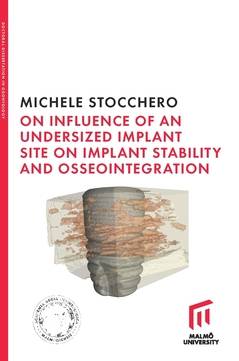
On influence of undersized implant site on implant stability and osseointegration

| Författare | |
|---|---|
| Förlag | Malmö Universitet |
| Genre | Medicin |
| Format | Häftad |
| Språk | Engelska |
| Antal sidor | 214 |
| Vikt | 430 gr |
| Utgiven | 2019-01-30 |
| SAB | Vk |
| ISBN | 9789171049698 |
The use of dental implants for the rehabilitation of edentulous areas is an established treatment, showing high success rates. Primary stability is one of the pre-requisites for osseointegration, and it is ensured by the mechanical interlocking at the bone to implant interface. Current procedures have changed from the original protocols, towards a reduction of treatment time. Nowadays, the achievement of a great magnitude of primary stability is demanded in clinical practice, since there is a trend to load the implant immediately or in the early stages after implant insertion. Aiming on this, several modifications have been introduced, such as more aggressive implant design, modified surfaces and novel surgical techniques. Undersized drilling preparation is one of the most commonly adopted protocols during the implant surgery. This technique creates an osteotomy that is consistently smaller than the implant diameter, so that a tight interfacial contact and compression is created. Clinically this is perceived with an increase of the insertion torque value (ITV).
Albeit commonly performed, several aspects of undersized drilling are still not well investigated. It was hypothesized that a great magnitude of compression at the implant insertion would generate
tissue damage and may trigger a negative bone response during the healing time. This could lead to an impairment of bone material properties, a decrease of stability and marginal bone loss. Based on a clinical need, the general aim of this thesis was a more consistent understanding of the effects of an undersized drilling osteotomy.






















